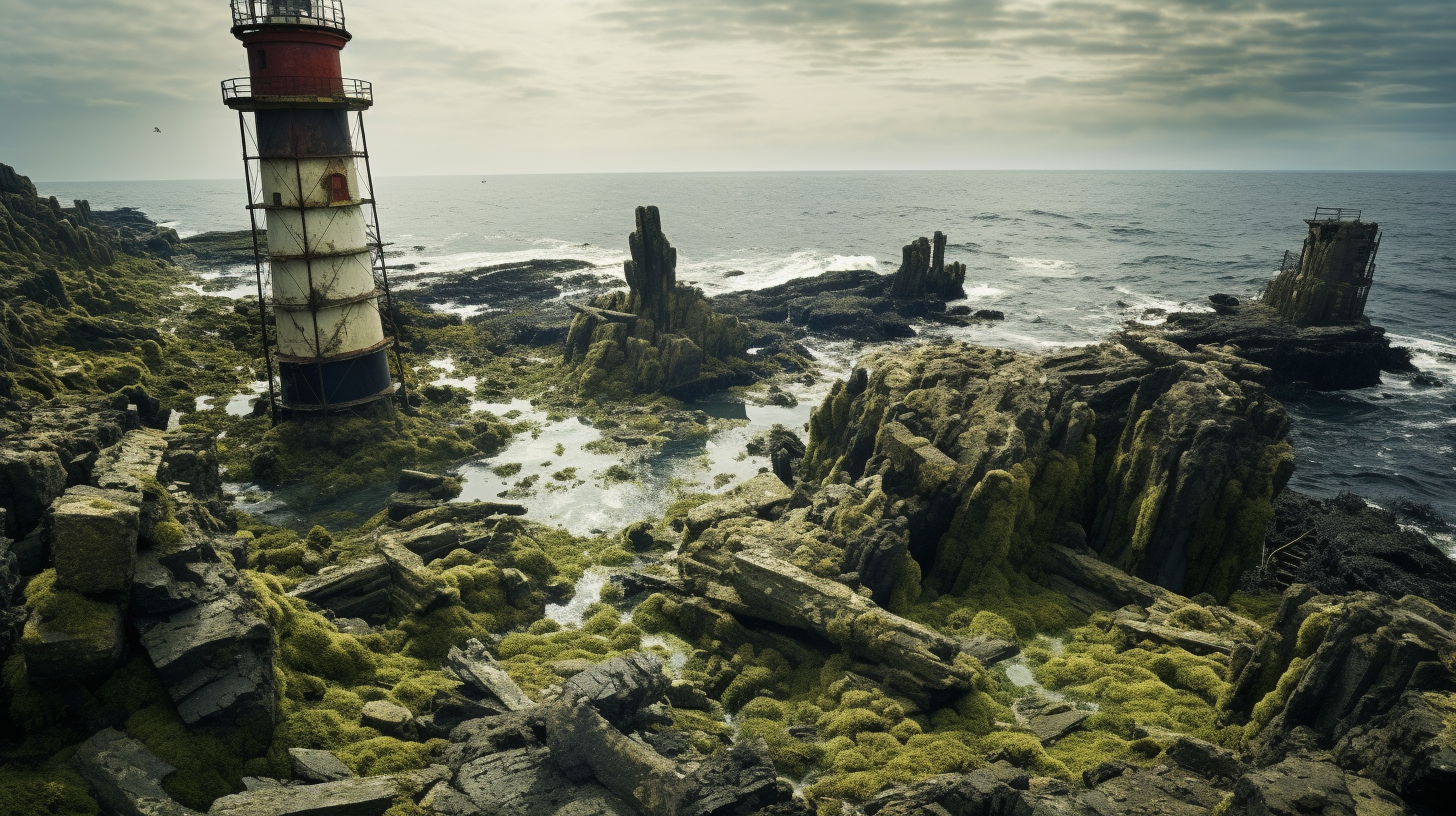Amidst the relentless assault of rising tides and ravaged coastlines, stand the forlorn sentinels of a bygone era. These lighthouses, once proud guardians of the sea’s perilous embrace, now blink their futile warnings into desolate expanses where the ocean has claimed dominion over man’s realm. The Beacons of the Abandoned Seas serve not as guides for weary sailors but as harrowing reminders of our environmental hubris.
The Iron Coast Lighthouse, whose radiant beam once cut through the darkest nights to usher vessels to safety, now surveys a horizon bereft of the maritime life it was built to protect. With water levels relentlessly climbing, the Iron Coast itself has succumbed to the relentless sea, leaving the lighthouse as a solitary figure on a watery wasteland where ships dare not venture.
Where the Carolina Lighthouse stood as a proud pillar amidst bustling trade routes, there now lies an eerie silence, punctuated only by the mournful cry of gulls that have made a home in its dilapidated structure. The ocean has not just silenced its purpose, but also the lives and economy that once thrived around these beacons. Tourism, commerce, vibrant communities—all swamped by the ever-indifferent tide.
Climate change, an omnipresent specter, lurks behind the abandonment of these landmarks. Rising sea temperatures and melting polar ice caps have swollen the seas, while increased storm activity has battered and bruised what little remains of the coastline’s defenses. These lighthouses, monuments to humanity’s endeavor to conquer the seas, have been reduced to relics—poignant, tragic relics of a battle we are losing with every carbon emission we ignore.
The Ashen Lighthouse, aptly named for its gray, decaying façade, mirrors the skies laden with the smog of industrial indifference. No painting or mural necessary, for the very air tells a story of neglect. Its light, once a hopeful gleam amidst encroaching storms, flickers sporadically, serving as a metaphor for the fading hope of a society all too slow to react to its planet’s distress signals.
Once symbols of safety and human triumph over the treacherous sea, these lighthouses now stand as ironic icons of our collective negligence. The nostalgia they evoke is a bitter one, for it serves not to comfort but to condemn. They are not posts of pride, but pillars of admonishment—their beams not of guidance, but of accusation, of what could have been if we had listened.
Even as we chart a course through these abject new waters, perhaps there is a glimmer of purpose left in these structures. Not as navigational aides, but as stark, unyielding monuments to the consequences of ecological apathy. And in that sense, perhaps their most vital message is not lost at sea, but deeply anchored in our consciousness—should we choose to heed it.
In a world where their primary role is no more, the lighthouses stand defiant. Creeping vines and rust cannot obscure their grandeur, nor can our negligence erase their legacy. They remind us, unwaveringly, of the seas they once watched over—their silent, solemn vigil a testament to a future we could still alter if only we heed their warning.
